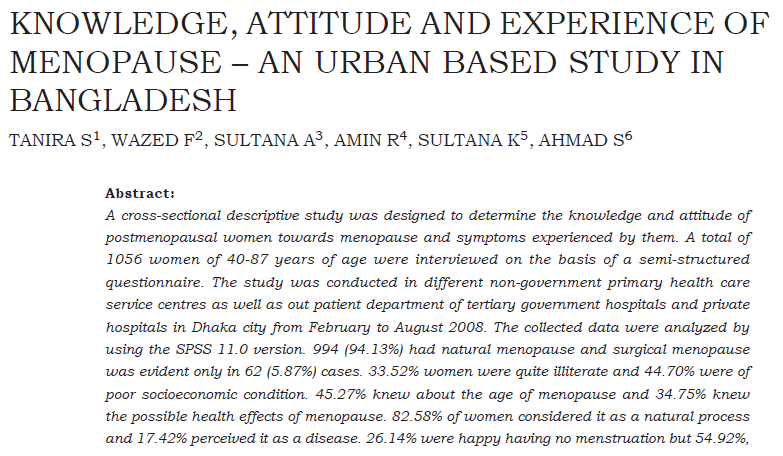Prevalence of, and risk factors for, symptomatic pelvic organ prolapse in Rural Bangladesh
The prevalence of symptomatic pelvic organ prolapse (POP), diagnosed by a pre-tested structured questionnaire, is unknown in Bangladesh. We investigated the prevalence of, and risk factors for, symptomatic POP in women in rural Bangladesh, recruited from the community. A cross-sectional survey of 787 women aged over 15 years was conducted in four villages in one district in rural Bangladesh. The prevalence of symptomatic POP and the risk factors associated with the condition was investigated, using Chi-squared and multivariate logistic regression. The prevalence of symptomatic POP was 15.6 %. The mean age of participants was 40.1 (±9.0) years. Women aged 35–44 years (odds ratio [OR] 1.96, 95 % confidence interval [CI] 1.03–3.73) and ≥45 years (OR 2.95, 95 % CI 1.62–5.38) were more likely to have POP compared with women aged ≤35 years. Having POP was positively associated with women having ≥5 children (OR 4.34, 95 % CI 1.39–13.58), having chronic obstructive pulmonary disease (COPD; OR 2.07, 95 % CI 1.02– 4.21), and women having constipation (OR 3.54, 95 % CI 1.87–6.72). Women whose husband had >5 years of schooling were less likely to have POP (OR 0.37, 95 % CI 0.19–0.73) compared with women whose husband had no schooling. Symptomatic POP affects a substantial proportion of women in rural Bangladesh and increases with age. Parity, COPD, constipation and husband’s education are associated with POP, all of which have the potential to be modified. Thus, interventions targeting these risk factors to prevent the condition are urgently needed in Bangladesh.
Full text article available at:
https://link.springer.com/content/pdf/10.1007%2Fs00192-016-3038-0.pdf

